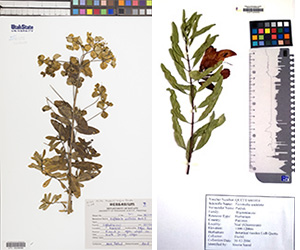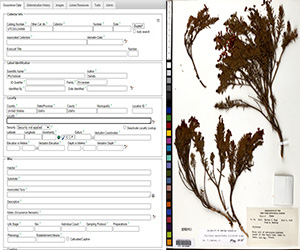Sharing images
Symbiota websites, such as OpenHerbarium and OpenZooMuseum, use images in many different ways. Some of these uses are shown in the banner. There is no limit to the number of images that can be associated with a taxon. Field images must be identified before submission and should be of high quality.
Specimen images
Specimen images can be used to aid digitization and as research resources. They can be made using anything from an inexpensive or cellphone camera and locally made stand to a high- end scanner and specially designed equipment. No matter what equipment is used, the images should be clear, evenly lit, and include a centimeter ruler. Including a color standard makes it possible to adjust for lighting issues.
Skeleton records
Skeleton records include ONLY the catalognumber, scientific name, and up to four administrative regions (country, stateprovince, county, municipality). As they are added, Symbiota automatically updates the summary of the collection’s holdings. Adding specimen images enables completion of data entry outside the herbarium. Once this is done, completing data entry for a specific taxon or specimens from a particular administrative region can become a project. Those involved in the project could be encouraged to write up a short research report and/or present a poster examining how the results obtained compare with data for a related taxon or adjacent region.
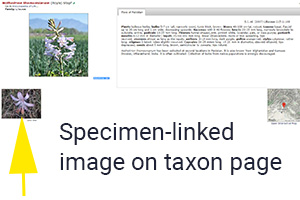
Specimen-linked images
Specimen-linked images include images of the living organisms and images of features such as stem cross-sections. Both kinds are valuable, made more so because they are linked to a specimen which can be examined to confirm (or correct) their identification. Specimens can be linked to multiple images, including images of their habitat and details used in identification. All enhance the value of the specimen. The best workflow is to record collection data in OpenHerbarium shortly after collection. The identification and images can be added later.
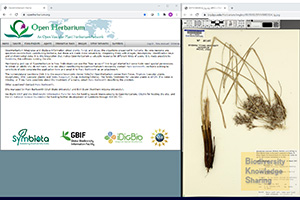
Image-based records
Specimens are usually the best way to document an occurrence record, but there are exceptions. In such cases, images can be used to document the occurrence. Ideally, several images showing different aspects of the occurrence such as its overall appearance, population density, habitat, and morphological features. Occurrence records for images requires the same data as specimen occurrence records with two exceptions: imaged-based records do no have catalog numbers but they MUST have georeference data. Instructions on submitting image-based records are here.
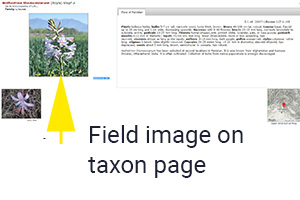
Field images
Field images show what a species looks like. They need not have any associated data. To be useful, they must show enough features to be readily identifiable. For examples of field images in use, see the taxon page for Notholirion thomsonianum. Note that both images on the page have a Creative Commons license CC BY-SA. “BY” means you may use them, with or without modification, in presentations and publications but you must credit the photographer. “SA” means you may share them with others but must do so under the same license.
